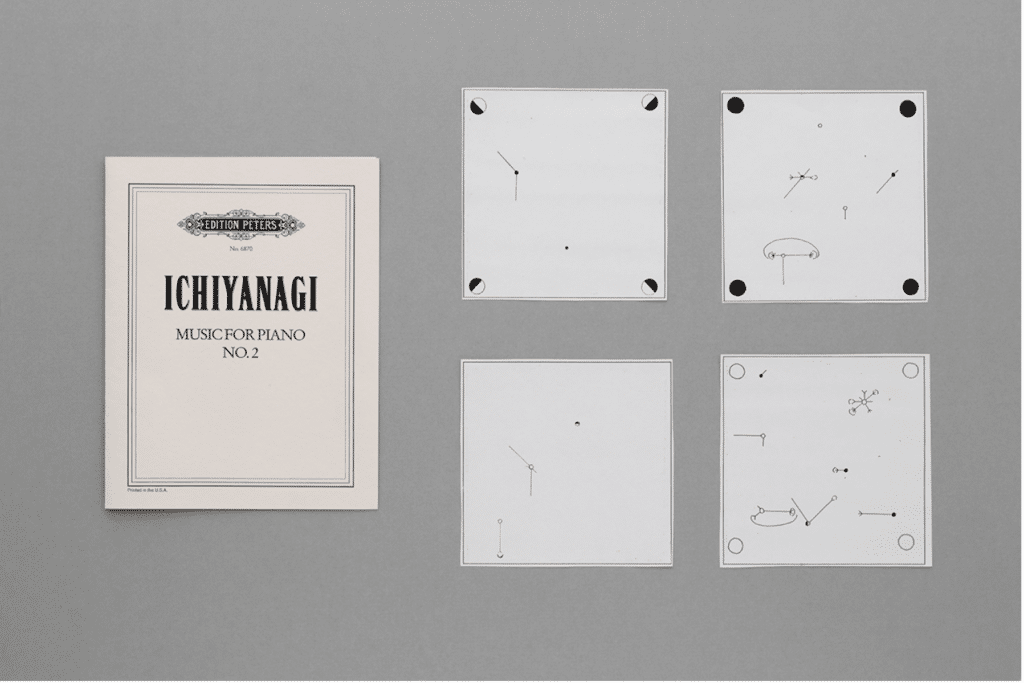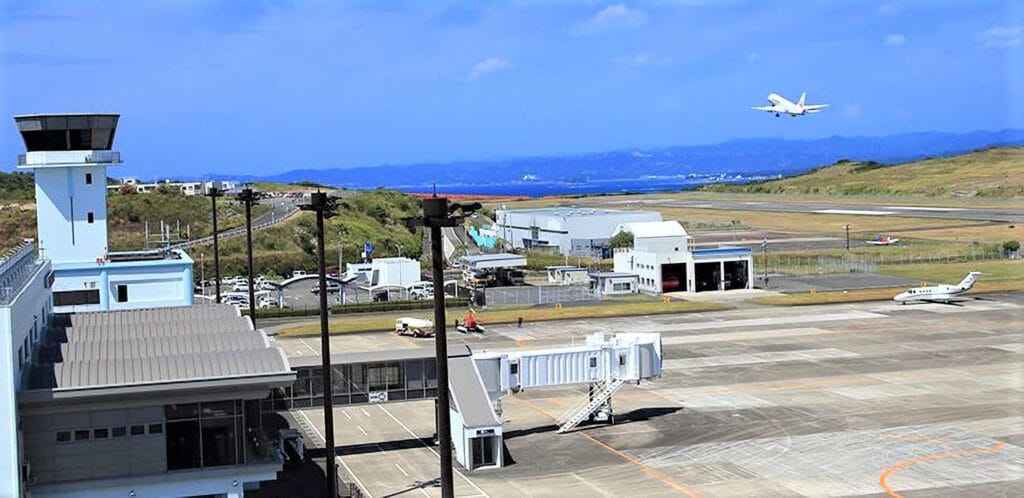Columns

Artist Introduction Vol.2:Toshi Ichiyanagi
The Chemistry of Toshi Ichiyanagi ×Nanki-Shirahama Airport
Free Your Mind and Go on a Journey of Sound
The traveller who leaves the port of sky open to the world, is worthy of questioning existing values and accepting chance.
The “graphic notation,” written using free figures instead of standard staff notation, will be a once-in-a-lifetime performance according to the interpretation of the player. By incorporating this contingency into the performance, Toshi Ichiyanagi challenged the way Western music should be created, with strict control by the composer. The spatial performance that makes full use of Takuji Kawai’s various playing styles will invite us to a novel sound journey.
About the Artist
Toshi Ichiyanagi is an eminent Japanese composer and pianist. He was born in Kobe, Japan on February 4th, 1933. He is currently based in Japan but has studied and performed across the globe extensively. Some of his most renowned pieces includes Kaiki (1960), Extended Voices (1967), Orchestral Space (1978), Berlin Renshi (1988) and Reigaku Symphony No.2 “Jitsugetsu Byobu Isso-Kokai,” (1989) to name a few.
Ichiyanagi studied at the Julliard School of Music in New York from 1954 to 1957. During this time, he was awarded the Elizabeth A. Coolidge Prize (1955), the Serge Koussevitzky Prize (1956), and the Alexander Gretchaninov Prize (1957). Prior to this, Ichiyanagi won first place in the composition division of the 18th (1949) and 20th (1951) Mainichi Music Competition (now the Music Competition of Japan).
In the 1960s, Ichiyanagi composed and performed in Japan by the invitation of the Festival of the Institute of Twentieth Century Music and later in the United States by the invitation of the Rockefeller Foundation.
In 1976, Ichiyanagi was invited by Deutscher Akademischer Austausch Dienst (DAAD) to be the Composer-in-Residence for the city of Berlin, where he resided for six months. He held concerts at music festivals across Europe introducing his own works as well as those by other Japanese composers. Ichiyanagi visited Europe many times thereafter, receiving commissions from the European Pro Musica Nova Festival (1976), Cologne Festival of Contemporary Music (1978, 1981), Holland Festival (1979) and Berliner Festwochen (1981) to name a few.
From the 1980s to 1990s, Ichiyanagi presented many large-scale works. During this period, he was commissioned by the National Theatre of Japan to compose works for gagaku, reigaku, shomyo and Japanese dance. Works from this period include Ôgenraku, Clouds Shore, Wind Roots and Reigaku Symphony “The Shadows Appearing through Darkness.” And in September 1989, he premiered Reigaku Symphony No.2 “Jitsugetsu Byobu Isso – Kokai,” at the National Theatre of Japan using both halls simultaneously.
In 1984, he was awarded his second Otaka Prize for Violin Concerto “Circulating Scenery,” which premiered at the Carnegie Hall in New York. In the same year, as part of the Japan-France Culture Summit, he held a concert of orchestral works at the Théâtre des Champs- Élysées in Paris along with Toru Takemitsu at the request of L’orchestre National de France. In 1985, he was awarded L’ordre des Arts et des Lettres of the French Republic.
In 1989, he formed the ‘Tokyo International Music Ensemble-The New Tradition’ (TIME), an orchestral group focused on traditional instruments and shomyo. Since its formation, the group has performed globally and at many music festivals, such as the Berlin Festival (1992), Wien Modern (1996) and ULTIMA Oslo Contemporary Music Festival (1997).
In 2004, he assumed the post of Composer-in-Residence at the Paci!c Music Festival (PMF). In 2006 he premiered his third opera White Nights.
Though predominantly known as a musician, Ichiyanagi’s creative in”uence extends beyond his music and into other artistic !elds. In 1962, he presented an exhibition at Tokyo Gallery entitled “The Four Composers” along with Toru Takemitsu, Toshiro Mayumizu and Yuji Takahashi. In 2018, he once again presented an exhibition at Tokyo Gallery entitled “Erasure” along with Takahiro Kondo.
Currently, Ichiyanagi serves as Artistic Director of TIME, Artistic Director of the Ensemble Origin-A Millennium of Resonance, as Adviser of the Japan Music Competition, Board Member of Saison Foundation, Councilor of Suntory Foundation for Arts, and General Artistic Director of the Kanagawa Arts Foundation amongst other duties.
Ichiyanagi is a recipient of the Otaka Award, the L’ordre des Arts et des Lettres of the French Republic, The Mainichi Art Award, The Kyoto Music Award, The Suntory Music Award, The Shijuhō-shō (Purple Ribbon Award), and the Kyokujitsu-shō (Order of the Rising Sun).

Venue
Nanki-Shirahama Airport

Nanki-Shirahama Airport is the only airport in Wakayama Prefecture, and is located at the southernmost tip of Honshu. It was privatized in 2019, and an expansion is planned for 2021. The airport has a number of advanced initiatives such as facial recognition and the use of robotics. In the future, the airport is expected to lead the way in re-thinking the entire city as a “theme park” or “cultural facility”, conveying information, connecting people, maximizing the attractiveness of the region.
Opening Hours: 8:30 – 20:00
Entrance Fee: Free
Open 7 days a week
1622-125 Saino Shirahama-cho Nishimuro-gun Wakayama, Japan 649-2334
